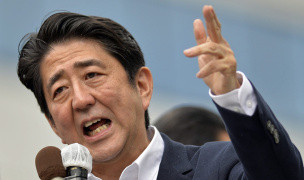 9 Terms
9 TermsHome > Terms > English (EN) > Civil Rights movement
Civil Rights movement
The Civil Rights movement spanned two decades (c.1948–68) in the historic battle for African American freedom in the United States. Its impacts were regional, nationwide and international. The movement was a unique partnership among local activists, national civil-rights organizations and the federal government, especially the federal courts. This partnership flourished most visibly between 1948 and 1965. During those seventeen years, the post-Reconstruction Southern system of race control was dismantled.
The movement is by far the largest interracial mass movement in American history. It changed the basic practice of race relations in the nation. The movement brought dignity, self-respect and national admiration to poor black people who had long been repressed and ignored, especially in the South. The movement also redefined the meaning of freedom in America. It established the right of the individual to protection from state or privately instituted discrimination. More importantly, it established the obligation of the federal government to serve as primary protector of individual rights.
The movement caused millions of Americans to embrace and celebrate the ideals expressed in the Declaration of Independence, the Bill of Rights and the “equal protection” clause of the 14th Amendment. For the first time in national history a significant majority of the people believed the goals of freedom, justice and equality for all could be realized. While it would not fulfill the expectations of many especially among African Americans, the movement still eradicated permanently the national acceptance of overt racist assumptions and practices.
Haphazard, erratic and disruptive throughout its course, its leadership often divided in conflict; nevertheless the movement managed to articulate certain commonly shared goals. Most central were the elimination of Jim Crow segregation and black disenfranchisement in the former Confederate States. These specific goals determined the origins, strategies and tactics of the movement during its most active phase.
The movement emerged in the aftermath of the Second World War because of changes in the African American population, in the Federal Government and in international affairs. Hundreds of thousands of black Americans had migrated to northern cities where they could vote, while enjoying lessened discrimination and better employment. Tens of thousands of black men had fought in the War and experienced the liberating influences of new, less racist environments. They and their families were no longer willing to suffer the institutionalized terror of Southern white racism. During this same era, the Depression and the War had increased the scope and size of the federal government. Most importantly the national government had evolved an expanding role as protector of citizen rights, primarily in the economic arena up to 1945. With the coming of the Cold War, the United States claimed leadership of the “Free World,” competing with the Soviet bloc for the allegiance of the underdeveloped, predominantly colored nations of the world. America’s treatment of its own citizens of color was believed to be a potential determining factor in this international contest.
The convergence of these larger socio-political forces ignited the movement and a series of dramatic episodes ultimately resulting in landmark civil-rights legislation. The desegregation of the military in 1948 is less renowned than the later Brown decision of the Supreme Court, a case brought by the NAACP. Nonetheless, military desegregation incorporated all the forces that came to work in the movement for the next decades and, like them, had consequences far broader than anticipated. President Truman’s executive order integrating the armed services coincided with efforts by liberal Democrats to attract new black voters in northern cities. The Cold War necessitated a large, standing military Black men were needed as career soldiers, but they would not submit to the racist treatment that had previously characterized the military. Much of the newly integrated force was stationed in the South, undermining the racial mores of the surrounding segregated communities. As veterans re-entered the civilian sector, many of the whites brought with them new acceptance of African Americans as coworkers, even supervisors, and many of the blacks developed new self-confidence and assertiveness in integrated settings.
The Montgomery Bus Boycott resulted in further evolution of the local black activist/federal government alliance and revealed the basic strategy of the movement. The targets for change would be southern segregation and voter discrimination. This strategy enabled movement activists to appeal to the majority of white Americans who lived outside the South. The movement’s demands were presented simply as appeals to basic constitutional rights guaranteed to all. Participants in the movement also invoked the rhetoric of Christian salvation for this secular cause. Thus the movement incorporated two of the strongest impulses in the American character—belief in democratic principles and in Protestant Christianity.
The tactic of non-violent, direct action challenged Southern segregation and disenfranchisement as protesters refused to obey manifestly “unjust laws.” Leaders (for example, Martin Luther King, Jr., Ralph Abernathy, James Farmer and Bayard Rustin) skillfully used the media, especially television, to contrast the dignity and righteousness of the abused demonstrators with the brutal and profane behavior of white police and citizenry Through the boycott of city buses or department stores, local black activists utilized economic pressure to divide the white community while energizing and giving a sense of empowerment to their working-class supporters.
In the original bus boycott, victory resulted from a combination of the municipal surrender to black demands and the federal court decision outlawing segregated buses.
Sit-ins and withholding of patronage led to gradual desegregation of some chain stores.
The Freedom Rides of the early 1960s ultimately provoked the intervention of the federal courts and the Justice Department, even though they could not immediately end segregation in interstate transportation, and, throughout the 1950s, Southern public schools remained overwhelmingly segregated.
The high-water mark of the Civil Rights era—the March on Washington on August 28, 1963—epitomized the movement’s strengths and weaknesses. It was a magnificent spectacle. Two hundred thousand black and white Americans joined together peacefully professing shared social and religious visions and demanding specific reform that they believed would ennoble all Americans and provide a model to the rest of the world. There were, however, many discordant voices at the march. Many complained that the declared goals were too circumscribed, that African Americans needed protection from de facto discrimination and economic impoverishment in the North, as well as from de jure segregation in the South. Local leaders complained that the march had been co-opted by the nationally heralded leaders and white authorities.
No concrete change followed immediately from the march. In fact, some Southern opponents redoubled their efforts to defeat civil-rights reform. Nevertheless, the partnership embodied by the march prevailed. Within two years, the first significant civilrights legislation since 1876 was enacted: the Civil Rights Act of 1964 and the Voting Rights Act of 1965.
After these legislative successes, the movement began to dissipate for several reasons.
Most important was that many whites in the civil-rights partnership, including those in the federal government, believed that the principal goals of the movement had been achieved. Segregation in public accommodations was outlawed, the courts had been empowered to force school desegregation and the Justice Department could now intervene to guarantee fair elections throughout the South. Because of the movement’s achievements, the demand for equality was taken up in northern black ghettos, among the poor, women, gays and lesbians and other national minorities. But opponents of change became better organized and effective, using the movement’s techniques in their struggles, for example, to end busing or abortion. At the same time, white liberals redirected much of their energies to opposing the war in Vietnam. They also experienced confusion and anger at the rise of black cultural nationalism among African Americans despondent at the nation’s failure to create a non-racist society.
Despite unfulfilled goals, the Civil Rights movement demonstrated the power of ordinary citizens to force permanent change when societal circumstances and the courage of both common people and their leaders converge to achieve an end. The movement transformed the meaning of freedom nationally and internationally. It established that governments are responsible for guaranteeing the rights of their citizens and that they may be legitimately resisted when they do not. Within the United States, the movement ended the right of white people to publicly humiliate black people. It invalidated claims to privilege based on color. It altered the basic practice of race relations, if not always the basic prejudices underneath. It has inspired freedom movements abroad from Eastern Europe to South Africa to China. The movement clearly sparked determined resistance to continued change by privileged elites in America. Nevertheless, the movement transformed and elevated Americans’ expectations of themselves. That may be its most lasting consequence.
- Part of Speech: noun
- Synonym(s):
- Blossary:
- Industry/Domain: Culture
- Category: American culture
- Company: Routledge
- Product:
- Acronym-Abbreviation:
Other Languages:
Member comments
Terms in the News
Billy Morgan
Sports; Snowboarding
The British snowboarder Billy Morgan has landed the sport’s first ever 1800 quadruple cork. The rider, who represented Great Britain in the 2014 Winter Olympics in Sochi, was in Livigno, Italy, when he achieved the man-oeuvre. It involves flipping four times, while body also spins with five complete rotations on a sideways or downward-facing axis. The trick ...
Marzieh Afkham
Broadcasting & receiving; News
Marzieh Afkham, who is the country’s first foreign ministry spokeswoman, will head a mission in east Asia, the state news agency reported. It is not clear to which country she will be posted as her appointment has yet to be announced officially. Afkham will only be the second female ambassador Iran has had. Under the last shah’s rule, Mehrangiz Dolatshahi, a ...
Weekly Packet
Language; Online services; Slang; Internet
Weekly Packet or "Paquete Semanal" as it is known in Cuba is a term used by Cubans to describe the information that is gathered from the internet outside of Cuba and saved onto hard drives to be transported into Cuba itself. Weekly Packets are then sold to Cuban's without internet access, allowing them to obtain information just days - and sometimes hours - after it ...
Asian Infrastructure Investment Bank (AIIB)
Banking; Investment banking
The Asian Infrastructure Investment Bank (AIIB) is an international financial institution established to address the need in Asia for infrastructure development. According to the Asian Development Bank, Asia needs $800 billion each year for roads, ports, power plants or other infrastructure projects before 2020. Originally proposed by China in 2013, a signing ...
Spartan
Online services; Internet
Spartan is the codename given to the new Microsoft Windows 10 browser that will replace Microsoft Windows Internet Explorer. The new browser will be built from the ground up and disregard any code from the IE platform. It has a new rendering engine that is built to be compatible with how the web is written today. The name Spartan is named after the ...
Featured Terms
big bang theory
Current model of galactic evolution in which the universe was created from an intense and brilliant explosion from a primeval fireball.
Contributor
Featured blossaries
Browers Terms By Category
- Journalism(537)
- Newspaper(79)
- Investigative journalism(44)
News service(660) Terms
- General architecture(562)
- Bridges(147)
- Castles(114)
- Landscape design(94)
- Architecture contemporaine(73)
- Skyscrapers(32)
Architecture(1050) Terms
- General boating(783)
- Sailboat(137)
- Yacht(26)
Boat(946) Terms
- Organic chemistry(2762)
- Toxicology(1415)
- General chemistry(1367)
- Inorganic chemistry(1014)
- Atmospheric chemistry(558)
- Analytical chemistry(530)
Chemistry(8305) Terms
- Algorithms & data structures(1125)
- Cryptography(11)




